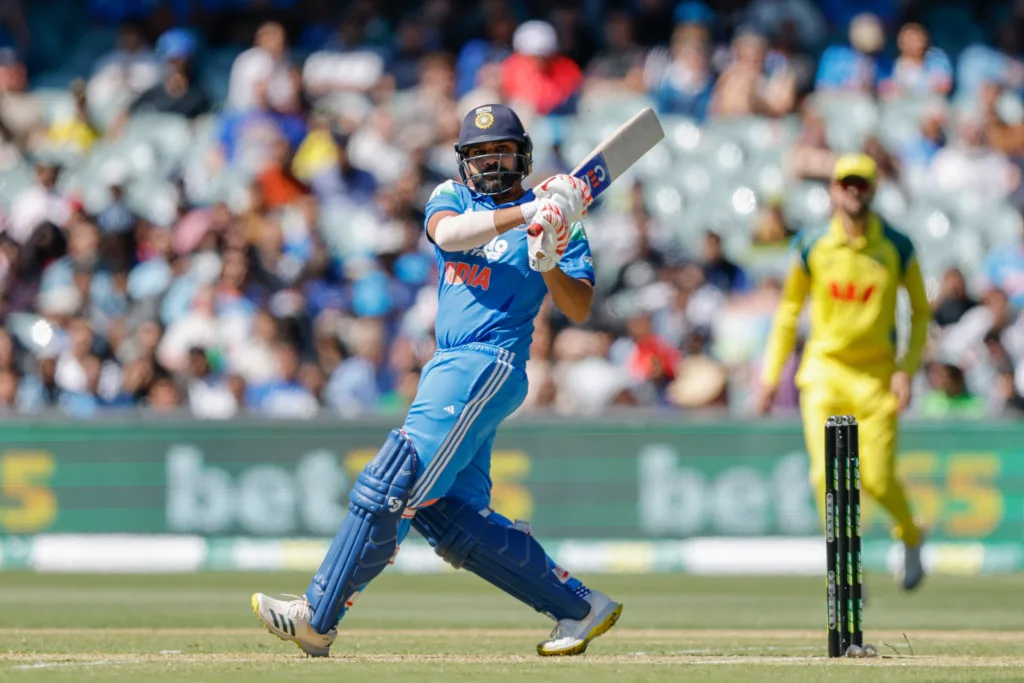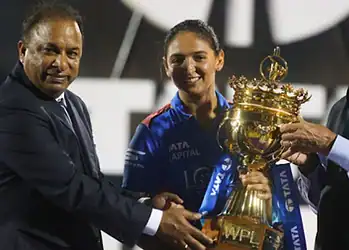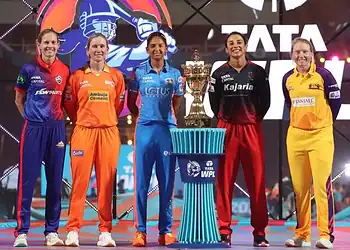The end of an era arrived quietly at the Gaddafi Stadium in Lahore, where Pakistan’s Babar Azam nudged a single off Donovan Ferreira to surpass Rohit Sharma’s long-standing record as the highest run-scorer in men’s T20 International cricket. With that simple shot to long-off, Babar eclipsed the 4,231 runs that had established Rohit Sharma as the format’s most prolific batsman, marking a significant changing of the guard in T20I cricket.
This milestone represents more than just numbers on a scoreboard—it symbolizes the conclusion of Rohit Sharma’s extraordinary journey in T20I cricket, a format where he had reigned supreme for years. The Indian captain’s retirement from T20Is following the 2024 World Cup triumph had already closed one chapter, but Babar’s achievement officially turns the page on Rohit Sharma’s remarkable statistical dominance.
Table of Contents
The Record That Defined Rohit Sharma’s T20I Supremacy
Rohit Sharma’s ascension to the top of T20I run-scoring charts was a testament to his longevity and consistency in the shortest format. Over 159 matches spanning 17 years, from his debut in the inaugural 2007 T20 World Cup to his triumphant farewell at the 2024 T20 World Cup, Rohit Sharma crafted a legacy that seemed untouchable.

The Mumbai stalwart accumulated 4,231 runs at an average of 32.05 and a strike rate of 140.89, numbers that reflected his evolution from a middle-order prospect to one of cricket’s most destructive openers. His statistics tell the story of a player who mastered the art of T20 batting across different phases of his career.
Rohit Sharma’s T20I Career Milestones
| Achievement | Details | Year |
|---|---|---|
| T20I Debut | vs South Africa (2007 T20 World Cup) | 2007 |
| First T20I Century | vs Sri Lanka (106 off 66 balls) | 2017 |
| Most T20I Centuries | 5 (joint record with Glenn Maxwell) | 2017-2022 |
| T20I Captaincy | 62 matches, 80.6% win rate | 2017-2024 |
| T20 World Cup Victory | Captain of winning team | 2024 |
What made Rohit Sharma’s record particularly impressive was the context in which he achieved it. Unlike many modern T20 specialists, Rohit played across multiple eras of the format, adapting his game as T20I cricket evolved from its experimental beginnings to the high-octane spectacle it became.
Babar Azam’s Pursuit: A Different Path to Greatness
Babar Azam’s rise to the summit of T20I run-scoring came through a markedly different route than Rohit Sharma’s journey. The Pakistani maestro achieved the milestone in just 130 matches—28 fewer than Rohit Sharma required—demonstrating remarkable consistency and accelerated scoring throughout his career.
The moment of triumph came during Pakistan’s comprehensive nine-wicket victory over South Africa, where Babar remained unbeaten on 11 runs. While modest in isolation, those runs carried immense historical significance, taking his tally to 4,234 runs and establishing a new benchmark for future generations.
Comparative Analysis: Rohit Sharma vs Babar Azam
| Statistic | Rohit Sharma | Babar Azam | Difference |
|---|---|---|---|
| Total Runs | 4,231 | 4,234 | +3 runs |
| Matches Played | 159 | 130 | -29 matches |
| Innings | 151 | 123 | -28 innings |
| Average | 32.05 | 39.57 | +7.52 |
| Strike Rate | 140.89 | 129.14 | -11.75 |
| Centuries | 5 | 3 | -2 |
| Half-centuries | 32 | 36 | +4 |
The comparison reveals two distinct approaches to T20I excellence. Rohit Sharma’s higher strike rate of 140.89 exemplified his aggressive, boundary-laden style that became synonymous with modern T20 cricket. Conversely, Babar’s superior average of 39.57 reflects a more measured approach prioritizing consistency over explosive scoring.
Rohit Sharma’s Revolutionary Impact on T20I Cricket
To understand the magnitude of Babar’s achievement, one must appreciate the foundation Rohit Sharma laid in T20I cricket. The Indian captain didn’t merely accumulate runs; he fundamentally changed how the format was approached, particularly as an opener.
Rohit Sharma’s transition from middle-order batsman to opening destroyer paralleled his ODI transformation. His ability to provide explosive starts while maintaining consistency across 17 years established the template for modern T20I opening. The 184 sixes he hit as an opener remain a testament to his boundary-hitting prowess and fearless approach.
His five T20I centuries—joint-most in the format’s history—came at crucial junctures for Indian cricket. Each hundred represented a masterclass in pacing T20 innings, from his maiden century against Sri Lanka in 2017 to his record-setting performances that established new benchmarks for T20I batting.
The Captaincy Legacy: Rohit Sharma’s Leadership Excellence
Beyond individual runs, Rohit Sharma’s T20I legacy is inseparable from his captaincy achievements. Leading India in 62 T20I matches, he compiled an exceptional win percentage of 80.6%, becoming the first captain to achieve 50 T20I victories.

Rohit Sharma’s Captaincy Achievements
| Tournament/Series | Year | Result | Significance |
|---|---|---|---|
| Nidahas Trophy | 2018 | Champions | First major trophy as captain |
| T20I vs New Zealand | 2021 | 3-0 series win | Statement series victory |
| T20 World Cup | 2024 | Champions | Career-defining triumph |
The pinnacle of Rohit Sharma’s T20I career came with India’s 2024 T20 World Cup victory, ending an 11-year drought for ICC trophies. His leadership throughout the tournament showcased tactical brilliance and emotional intelligence, guiding a diverse group of players to cricket’s ultimate prize in the shortest format.
That triumph provided the perfect farewell, allowing Rohit Sharma to retire from T20Is at the summit of the format. His post-match retirement announcement, delivered with characteristic humility, marked the end of an era that had begun with a teenager’s debut in South Africa 17 years earlier.
The Changing Landscape: What Babar’s Record Means
Babar Azam’s surpassing of Rohit Sharma’s record signals a generational shift in T20I cricket. The Pakistani captain’s achievement comes at a time when the format continues evolving, with new leagues, playing conditions, and tactical innovations constantly emerging.
The timing of this milestone is particularly poignant, coming during Babar’s return to T20I cricket after being dropped for the Asia Cup. His recall for the South Africa series proved prescient, as he immediately authored this historic achievement that will forever link his name with T20I greatness.
For Rohit Sharma, watching his record fall represents both an end and a validation. The Indian captain’s retirement from T20Is was strategic, allowing him to focus on ODI and Test cricket while his T20I legacy remained intact. That Babar required 28 fewer matches to surpass his total only emphasizes the quality of competition Rohit faced throughout his career.
Statistical Evolution: How Records Reflect T20I’s Growth
The progression from Rohit Sharma to Babar Azam as T20I’s leading run-scorer mirrors the format’s evolution from novelty to mainstream cricket. When Rohit debuted in 2007, T20I cricket was in its infancy, with limited understanding of optimal strategies and scoring patterns.
By the time Babar achieved his record-breaking feat, T20I cricket had matured into a sophisticated format with established best practices, advanced analytics, and professional coaching structures. This evolution partly explains why Babar could achieve in 130 matches what took Rohit 159 matches to accomplish.
The strike rate differential between the two players—Rohit’s 140.89 versus Babar’s 129.14—reflects different eras and approaches. Rohit Sharma’s career spanned T20I cricket’s most explosive period, when boundary-hitting became paramount. Babar’s approach, emphasizing consistency and building innings, represents a more recent understanding of T20 batting.
Global Recognition and Future Implications
The changing of this particular guard resonates throughout cricket’s global community. Rohit Sharma’s record stood as a symbol of Indian cricket’s T20I dominance, while Babar’s achievement represents Pakistan’s growing influence in the format.
This milestone also highlights the increasing competitiveness of international T20I cricket. With established stars like Rohit Sharma and Virat Kohli retiring from the format, new generations led by players like Babar Azam are establishing their own legacies.
For future T20I batsmen, both Rohit Sharma’s and Babar Azam’s approaches offer valuable templates. Rohit’s aggressive, boundary-focused method and Babar’s consistency-driven style demonstrate that multiple paths exist to T20I excellence.
The Human Story Behind the Numbers
Beyond statistics and records, this milestone represents two remarkable individual journeys. Rohit Sharma’s path from talented prospect to T20I legend illustrates the rewards of persistence and adaptation. His ability to reinvent himself as an opener in limited-overs cricket became the foundation for his record-breaking achievements.
Babar Azam’s ascension reflects different challenges—leading Pakistan cricket through transitional periods while maintaining personal excellence. His record-breaking moment came during a comeback series, adding narrative weight to statistical achievement.

Both players embody the global nature of modern cricket, where records transcend national boundaries while inspiring future generations worldwide. Rohit Sharma’s gracious acknowledgment of Babar’s achievement exemplifies the sporting spirit that makes such milestones meaningful beyond mere numbers.
Read More: India vs Australia: The Greatest Chase – How India Women Conquered Nerves and History
FAQs
How long did Rohit Sharma hold the T20I run-scoring record?
Rohit Sharma held the record for most T20I runs from November 2019 when he surpassed Shoaib Malik’s previous mark, until October 31, 2025, when Babar Azam overtook his tally of 4,231 runs. He held the record for approximately 6 years.
What was Rohit Sharma’s T20I career span and major achievements?
Rohit Sharma played T20I cricket from 2007 to 2024, spanning 17 years. His major achievements include 4,231 runs in 159 matches, 5 T20I centuries (joint-most), captaining India to the 2024 T20 World Cup victory, and maintaining an 80.6% win percentage as captain across 62 matches.
How did Babar Azam break Rohit Sharma’s record?
Babar Azam surpassed Rohit Sharma’s record during the second T20I against South Africa at Gaddafi Stadium, Lahore, on October 31, 2025. He needed just 9 runs entering the match and achieved the milestone by hitting a single off Donovan Ferreira to long-off, finishing unbeaten on 11 runs.
What is the difference in efficiency between Rohit Sharma and Babar Azam’s records?
Babar Azam achieved his record in 130 matches compared to Rohit Sharma’s 159 matches—28 fewer games. While Rohit averaged 32.05 with a strike rate of 140.89, Babar averages 39.57 with a strike rate of 129.14, showing different approaches to T20I batting.
When did Rohit Sharma retire from T20I cricket and why?
Rohit Sharma announced his retirement from T20I cricket immediately after India’s 2024 T20 World Cup victory on June 29, 2024. He retired to focus on ODI and Test cricket while ending his T20I career on the highest possible note—as a World Cup-winning captain.








